When discussing impeccable predators such as immense grizzly bears or wolves, we often inherently assume that they are adept at self-preservation. Regardless of the challenges presented by their wild lifestyle, it seems to be their forte to manage or evade these issues. They appear to be the sort of creatures that instinctively know how to tackle the various trials thrown at them by their untamed life each day. Nevertheless, there are circumstances where these animals truly require a bit of assistance. Irrespective of the source of help – whether it’s their instinctual ability to think quickly or the intervention of humans – their stories are usually as endearing as it can be.
In this piece, we have collected two narratives for you. The first one revolves around a mother bear, her small offspring, and an icy lake. The second story relates to a gentleman providing assistance to a wolf.
The Day Started Out With High Hopes
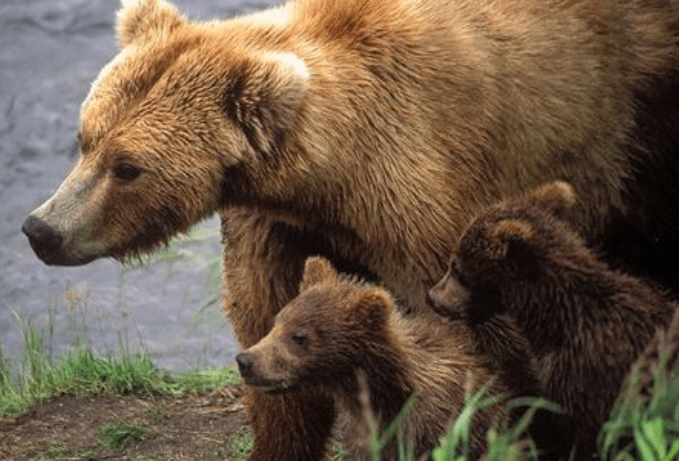
Bears are traditionally considered robust creatures unlikely to need aid. However, a mother bear and her two cubs found themselves in a challenging situation requiring kind intervention from a person who happened to be nearby. Their brave effort to traverse a frigid Russian lake didn’t work out as anticipated. Fortunately, the tale doesn’t conclude with a sad ending. This very real event that happened on a chilly Russian day is an uplifting one. As you delve into the story, you’ll find more elements that will touch your heart.
Things Did Not Go As Planned
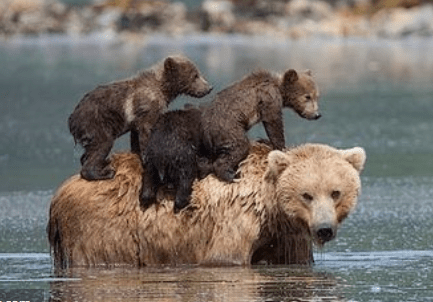
As you rise with the dawn, it’s highly unlikely that you ponder the daily routine of a bear in Russia. But your perspective is about to change. You’ll find yourself engrossed in a tale that’s irresistible. This story brings to light the relationship between a mother bear and her offspring, delivering a profound life lesson. It is a narrative that encompasses selflessness, terror, and sorrow while kindling a flame of hope. It portrays the beauty of an unspoken connection that transcends boundaries in the natural world. It depicts a familial bond strong enough to risk everything to protect a life, even when that life belongs to a totally different species.
A Treacherous Lake Crossing

The narrative commences on a chilly day in Russia, where the freshwater Lake Vygozero is situated. This lake can be found in the northwestern part of the nation, within the Republic of Karelia. With a size of approximately 480 square miles, this lake forms part of the Vyg drainage in the White Sea basin. As winter sets in, the water temperatures in this region can become quite low. However, the region’s average yearly temperature stands at 2.6 Celsius, which is about 36.7 Fahrenheit. Interestingly, the lake’s water has been recorded to reach incredibly low temperatures, dropping to as low as -20 degrees Celsius or -4 degrees Fahrenheit.
A Large Frozen Lake
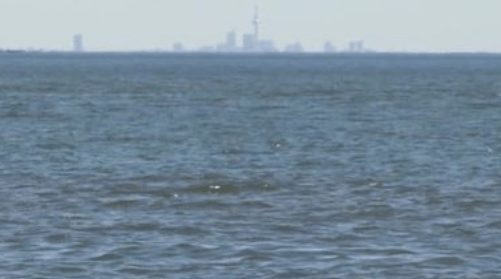
Considering the tremendous size of the lake and the sub-zero temperatures, the water is exceedingly cold for humans and most wildlife. Crossing the lake from one end to the other, under such frigid conditions, appears to be a daunting, almost impossible task. So, it begs the question, why would a mother bear believe she and her cubs could take the plunge and swim across without facing repercussions? Especially when mother bears are known for their innate sense of protection for their offspring. Regardless of her motivation, she decided to undertake this endeavor. She and her cubs commenced their journey through the icy waters.
A Bad Decision
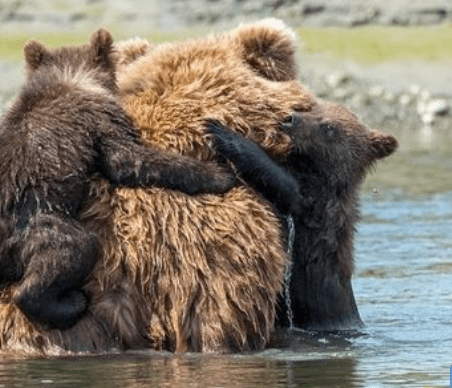
The intentions of this mother bear remain unidentified as she resolved to traverse the icy lake, her cubs tagging along. She was soon to find out if her offspring had the resilience she may have expected. Her determination was about to be tested when she ventured forth into the lake, her two cubs gripping her back. The trio embarked on their trek across the lake. It didn’t take much time to realize that she could not sustain the cubs’ weight on her back. One could wonder if her stamina and resolve would suffice to lead the three across the chilling lake.
Some Mamas Have No Instinct
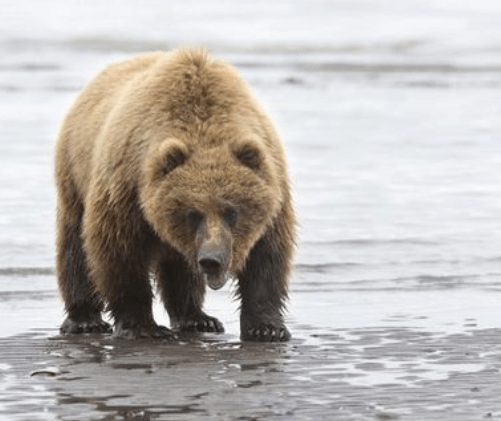
Soon after the mother bear started to cross the water body, her young ones had a tough time trying to match her pace. While it’s widely acknowledged that bear mothers would stop at nothing to defend their cubs, even putting their own lives on the line should it come down to that, this specific mother bear appeared to lack that inherent maternal intuition. Perhaps, she was just stuck in her tracks at the time. As her cubs started to stray further into the heart of the lake, their desperate attempts to stay afloat signified a struggle for survival, with seemingly no direction or instructions on how to handle the situation.
Mama Bear Abandons Cubs To Save Herself
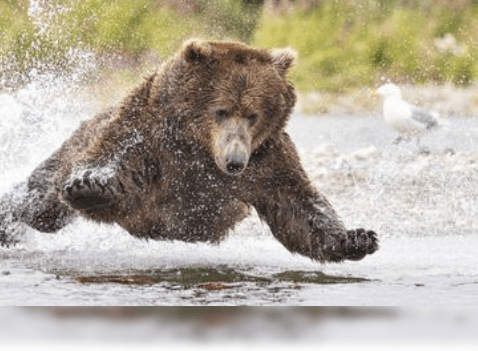
Regardless of her reasoning or deficiency in dealing with issues, she had now essentially deserted her offspring. This act is bewildering and disappointing, given that mother bears are typically considered fiercely protective. She started to move away, leaving her cubs struggling desperately in the icy lake water. It appeared that her survival instinct took preference over her motherly duty. Whatever the cause, the outcome was a perilous circumstance where two adolescent bear cubs faced extreme danger. Assistance was required to guide them safely ashore and away from the cold waters their mother had left them in.
The Strong Current Was Too Much To Conquer
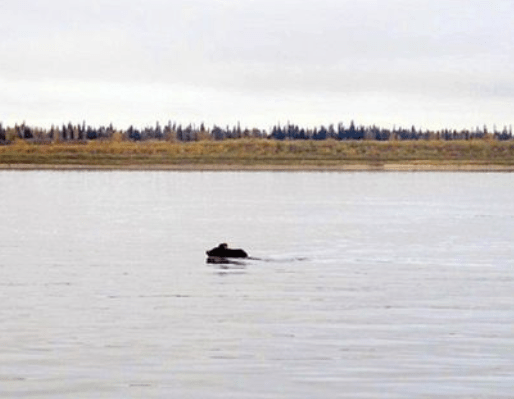
Perhaps the mother bear’s decision to abandon her cubs in a perilous situation wasn’t entirely due to her lack of maternal proficiency. The lake, after all, had a particularly intense undertow. This formidable undertow made traversing the lake incredibly daunting. It seems the mother bear did attempt to ensure the safe passage of her cubs across the frigid waters, but ultimately, the intensity of the current must have overwhelmed her. She spent a considerable period struggling against the current with her infant cubs clung to her back. However, she eventually found herself defeated in the fight. As she fought for her own survival, her cubs were being ripped away from her.
Abandoned And Struggling Cubs In Need Of Help
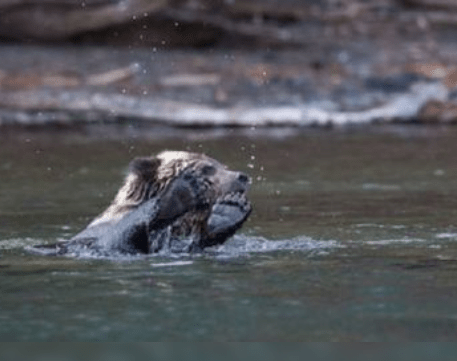
The mother bear was dragged away from her young ones, fighting for her own survival. Perhaps in her heart, she held on to the hope that her cubs could somehow find their way back to her. She swam for a considerable duration before triumphantly reaching the shore. But upon her arrival, she saw her cubs lagging behind, battling to stay above the water. With their mother now absent, the two cubs were left to fend for themselves, struggling to hold on to life. Their energy was draining, and they desperately needed assistance to cross the frigid lake to safety.
The Odds Were Against Them
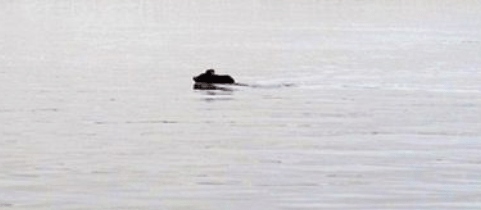
The chances of the two juvenile bear cubs making it through this ordeal were quite slim. They were still very unripe, with barely any experience navigating such icy waters. They had to rely solely on themselves now. The twin cubs were probably gripped by fear, struggling to keep their cool amidst the numbing waters that threatened to consume them under its potent currents into a frosty underwater tomb. To overcome these glacial waters and safely reach the shore, they would require assistance.
An Unsuspecting Rescue
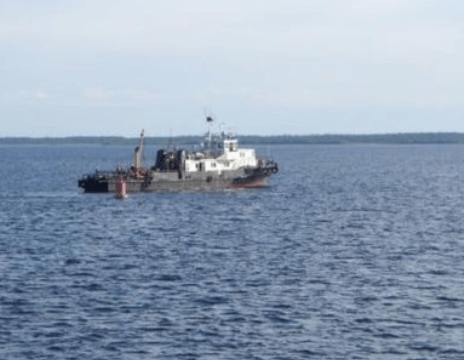
As the twin bear cubs struggled in the water, desperately fighting to stay afloat, an unexpected source of assistance was approaching. Just when their situation seemed desperate and their chances of survival were looking bleak, a glimmer of hope materialized. Out of nowhere, a fishing boat cruised into view. Upon it were fishermen who quickly noticed the bears’ distress. It was evident something was amiss as the mother bear was nowhere in sight. The fishermen realized the responsibility of rescuing these little creatures had fallen to them. But did they possess what was necessary to pull off this rescue?
The Rescue Boat Came Closer

As the vessel carrying the fishermen, who were set to be their saviors, drew nearer, the peril the bear cubs were in was palpable. They were racing against the clock. The bear cubs came off as utterly drained and completely fatigued. They battled to keep treading water and maintaining their heads above the icy lake. The team of fishermen recognized that it was their responsibility to rescue them and just needed to figure out the best approach. Suddenly, an innovative idea struck them. They were on a fishing boat, after all. It was equipped with nets and gear for catching fish. On this occasion though, rather than fish, they would be reeling in bears.
They Were Being Watched
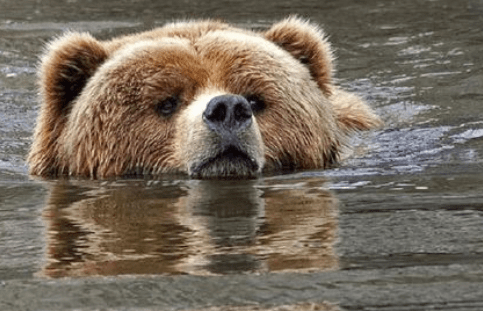
While the group of fishermen deliberated on how to best utilize their nets and fishing equipment to rescue the cubs, they realized they had an audience. Despite having left her babies in the chilly water, the mother bear was seen nearby on the bank, attentively monitoring the situation to find out if her offspring would be rescued. Her imposing size cast a shadow of intimidation on the fishermen, making them question the wisdom of their rescue mission. They were anxious that she might try to board the vessel to interfere.
Coming Up With A Fast Plan
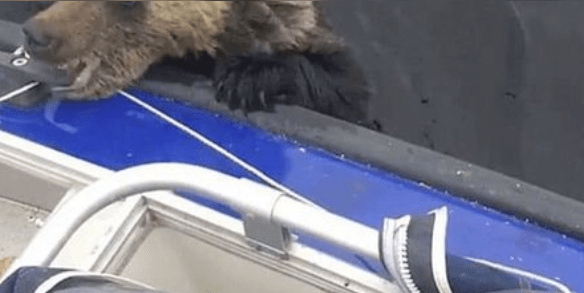
The group of fishermen was confronted with a predicament, which required them to devise a solution promptly. They were aware that the beleaguered cubs necessitated assistance while understanding the potential danger the mother bear could represent. Despite the urgency to act swiftly, they opted to delay for a brief period until the mother bear distanced itself onto the shore. During this interim, they strategized meticulously on the best approach to extract the cubs from the water and into a safe zone. In managing such a risky circumstance, they took time to think through every possible aspect.
Capture The Rescue On Video
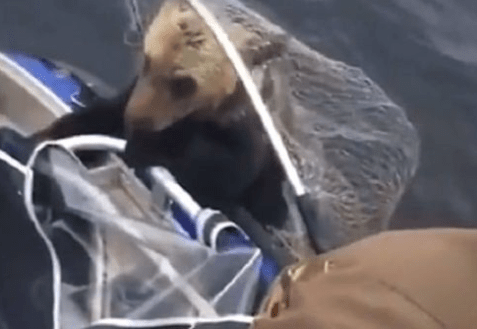
The anglers were aware that each action they took required utmost care. The conditions could become fatal for either them or the bear cubs at any moment. The creatures they had set out to save were mere infants, but nevertheless remained untamed beasts. They understood that their fellow anglers often tell exaggerated stories about their fish catches, so they decided to film the entire episode. They worried that without this evidence, their narrative might be dismissed as fiction. In retrospect, recording the whole event was an astute choice. They managed to document the full rescue operation of the bear cubs, including the highlight when one of the cubs stretched out its paw attempting to board their vessel.
Lending A Helpful Hand
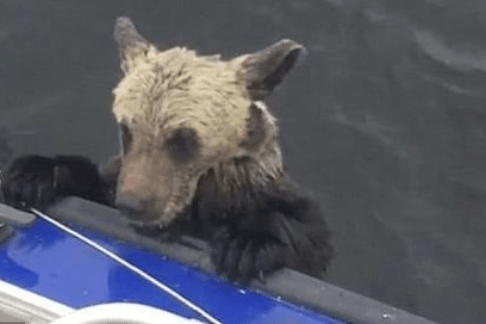
The small cub struggled to climb onto the ship, but the elevation of the deck was too high. Despite its continuous efforts, the cub could not hoist itself up onto the vessel. The cubs were becoming frail from their battle with the water and the chilling water temperatures. They had been enduring the frosty water for quite some time. Luckily, the fishermen jumped in to lend a helping hand. They quickly transitioned into rescue mode, repurposing their fishing equipment to aid the bear, offering it as a grip point so the cub could finally clamber aboard.
Fishing For A Bear Cub Or Two
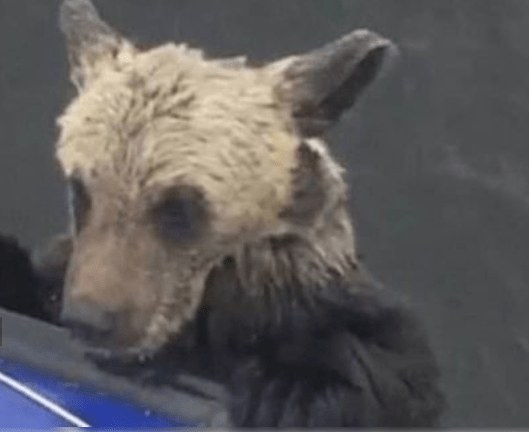
The cub was able to ascend onto the boat with the support of the fishermen’s fishing equipment, demonstrating the effectiveness of their efforts. However, their assistance was not limited to just the use of fishing gear. They tapped into their animal knowledge as well. These fishermen understood more than just fish species; they were also aware of a bear’s characteristics. They knew that bears possess extremely sharp teeth and a powerful jaw. Therefore, they let the bear cub use its mouth as a leverage tool to aid in its boarding onto the vessel.
Did Their Plan Save The Bears?
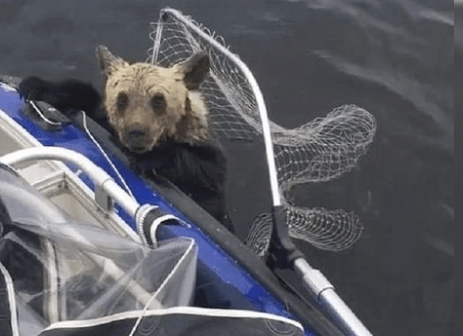
As the plan unfolded, the bear tried to mount the vessel. It looked like everything would go off without a hitch. However, the bear was still too far from the boat’s ramp to lift himself fully to safety. They had managed to get this close to saving the bear, and leaving him there would mean his eventual fall into the water. They were also aware of the possible risks that could threaten their lives. Nevertheless, the fishermen disregarded their safety, driven by their determination to rescue the bear cubs. They quickly united to haul the bear up.
A Quick Decision Regarding Life Or Death
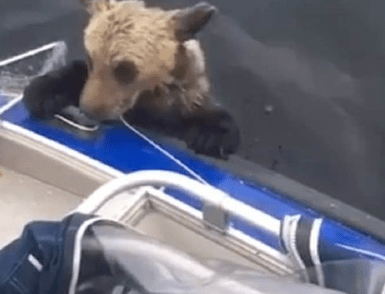
The moment they extended their hands to rescue the bear cub, they were keenly aware of the severe dangers they were flirting with. A misjudged reach could result in them getting dragged into the icy waters by the cub. More dreadful still, the cub might turn violent, potentially leaving them seriously injured or even lifeless. The sole question that remained was whether to put their faith in the bear cubs. Would the cubs cooperate in the rescue mission? Could they harmonise human-bear efforts to ensure everyone’s survival? The fisherman profoundly wished for no harm to come upon anyone in their endeavours.
An Unspoken Connection Between Human And Bear
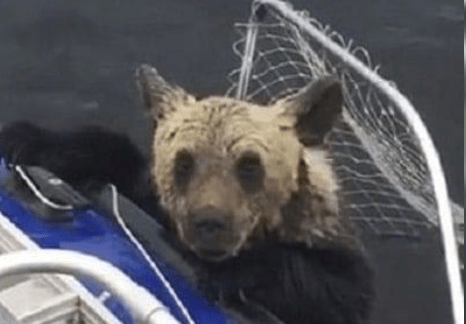
As the bear cub peered up at the fisherman from the chilly depths, a boat being the sole barrier between them, an inexplicable bond seemed to form. Incredible, isn’t it? A group of humans would typically tremble in terror in the presence of a bear, but here they were, face to face with a young cub. A silent exchange transpired between the two species, their eyes meeting for a fleeting second, connecting deep within each other’s souls. The profound link between the helpless baby bear and the fishermen on board was palpable. The crew realized the potential risks involved, but they had to take them. They were committed to doing whatever it took to rescue this vulnerable cub.
It Was Time For Another Brilliant Idea
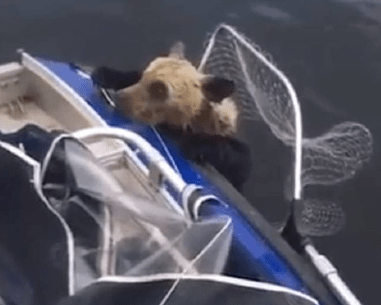
While the fisherman and the bear cub grappled to secure the cub’s safety, it became evident that a new strategy was necessary. On reflection, the plan seemed fairly basic. However, amidst the peril, the concept arose as if it was a brilliant revelation. They decided to utilize their fishing nets to attempt to extract the bear from its predicament. The plan was to get under the bear with the net and hoist it out of the frigid waters. They had performed this operation numerous times with fishes, but could this tactic be successful with a marooned bear cub?
Would Their Plan Work?
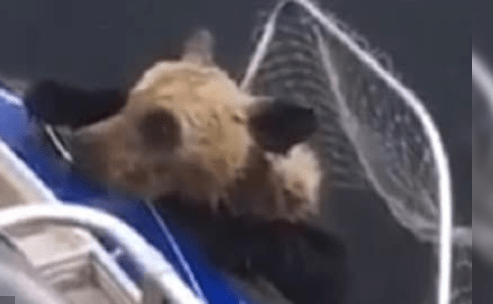
Throughout their seafaring career, the team of fishermen had captured innumerable fish. However, would their method be effective on a bear? They were most concerned that their fishing net, built to tolerate the wriggling of fish, might not support the mass of a bear cub. Even with the possibility of the net not being able to bear the weight, the fishermen went ahead with their strategy and began their initiative. They were prepared to risk damaging their fishing equipment to provide the young bear with a possibility of survival. Yet, the question remained, would their plan succeed?
Going Fishing For A Bear
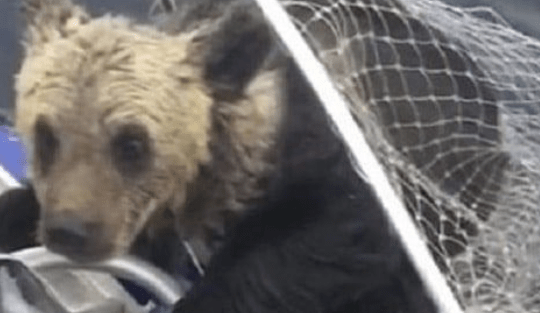
The fishermen were compelled to test their concept. They had no alternatives. They flung their net into the lake and set about rescuing the first cub. Just as they would a fish, they attempted to ensnare the cub and draw it in using their bare hands. With the bear cub growing increasingly weary, they raced against time. They succeeded in netting the first cub and brought it nearer to the boat. As they began pulling the net with the bear in tow, the fishermen maintained a keen watch to ensure the bear didn’t panic and put himself or the crew at risk.
Everybody Just Calm Down
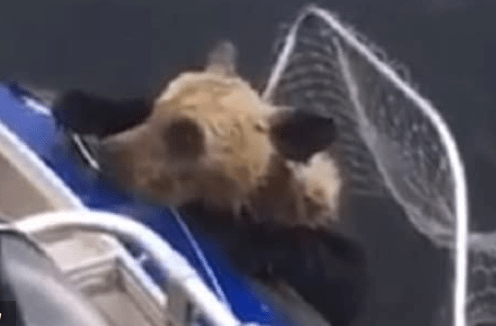
Despite the fishermen’s plans going smoothly, they remained aware that they were handling a wild creature. They couldn’t predict the cub’s reactions or the level of its fear. Even if the bear didn’t have a hostile nature, it was quite possible for the cub to lash out or unintentionally injure a person around it. They had to undertake efforts to soothe the cub sufficiently to ensure its safe retrieval aboard without any risk of aggressive or fearful reactions. The only certainty they had was their commitment to persist in their attempts to rescue the bear.
Heavier Than It Looked
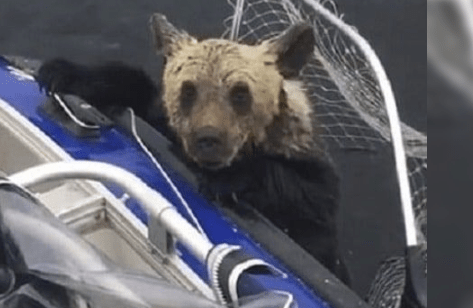
Despite its young age, the small bear cub weighed more than it seemed. The fishermen quickly grasped the hefty mass of the bear, knowing it would require great strength to haul it aboard to safety. They were relieved that it was the cubs, and not the significantly larger mother, who were in trouble. Adult bears can tip the scales at over 1,300 pounds when fully grown. Had this bear been older, the fishermen’s efforts could have been ineffective. Even a baby bear cub, with its fur waterlogged, carries more weight in the water.
Heave-Ho!
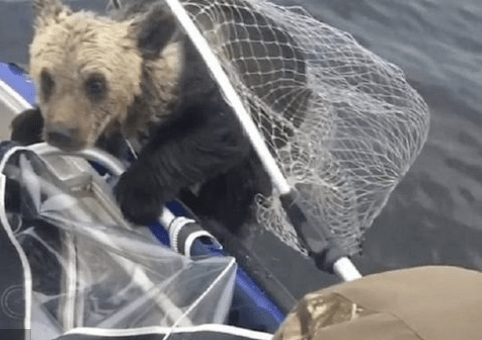
If a pair of bear cubs were destined to become helpless in chilly Russian lake waters, it’s fortunate that it was a group of robust fishermen that discovered them. These men were no strangers to pulling in hefty fish-laden nets and navigating through turbulent sea conditions. The chill of extreme cold was also something they were familiar with and they had prepared accordingly. Dragging a net full of thrashing fish can be demanding, but they were about to discover that this effort is inconsequential compared to the task of lifting a heavy bear.
Pulled To Safety
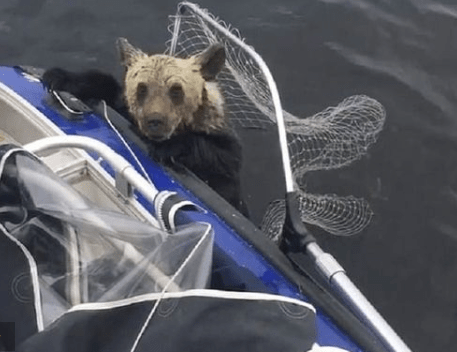
After much strain and exertion, the cub was finally close enough to mount the boat. Everyone onboard was filled with hope and excitement, anticipating that their efforts would yield positive results. They had successfully brought the first bear cub to safety. However, the task of saving the other cub still remained. The second cub was spending all this time in the freezing lake, staying afloat while they were saving its sibling. To make matters more complicated, this cub was further from the boat, and they now had to deal with a frightened and soaked cub on the boat as they initiated the rescue of the second one.
Now Let’s Do It Again
The fishermen could be credited with one accomplishment. After successfully managing to get one bear cub onboard without any incidents, their confidence surged towards rescuing the second one. However, the physical exertion from the first rescue left them somewhat drained. Would they be able to replicate the feat with the second bear cub? It would demand exceptional determination, robustness, and energy, which was going into decline. However, they had one advantage – the adrenaline rush which was spurring them on. Also, their experience of using fishing gear for rescue effectively once ignited hope of its success the second time around.
Sibling Bear Cubs Reunited
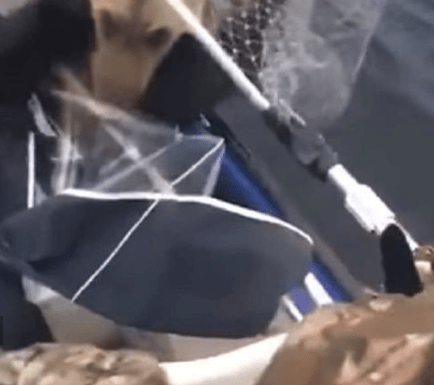
The fishermen, in spite of their fatigue, found the persistence they needed to haul the second bear onto their boat. Though their strength was depleted and they were on the verge of exhaustion, they were well aware that halting their efforts was not an option if both bear cubs were to be saved. The fishermen understood that they were the sole chance for the bears’ survival. They vowed not to abandon their mission to save the second cub and exerted every ounce of their remaining energy to pull the bear cub on board. Eventually, their efforts yielded results, as the second bear cub was finally aboard and reunited with its sibling.
What Do We Do Now?
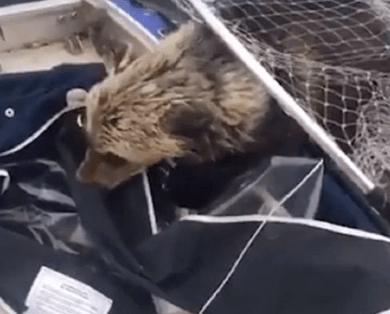
With a sense of relief washing over them, the group of fishermen exhaled collectively. It was evident that their hard work had not been in vain. They had successfully managed to get the bear cubs onto their boat. Their moment of success was marked by a burst of jubilant cheers, accompanied by high fives and ecstatic shouts. Nevertheless, there was a pressing sense of urgency. Their initial happiness was short-lived as they realized they were only halfway through their mission. What came next? Keeping the cubs on their boat whilst they continued their fishing activities was not an option. Their ultimate goal was to reunite the bear cubs with their mother. But the dilemma remained – how would they achieve this?
Not Everyone Was Happy
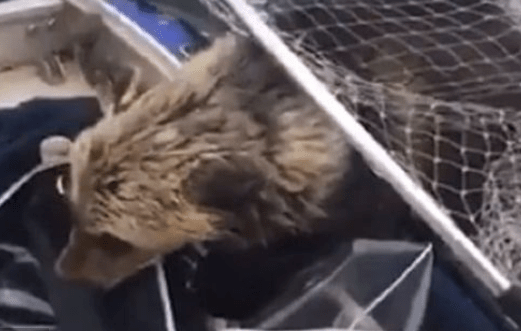
As the fishermen enjoyed a brief moment of celebration, their jubilation was, however, momentary. The two cubs, though safe from the lethal threat of drowning, were exhausted, drenched, and bitterly cold. Moreover, they seemed intensely bewildered by the unfamiliar surroundings of the fishing boat. The cubs began to tremble. Was it because of the chilly temperature or out of fear? Likely, it was a combination of both, compounded by the absence of their mother, who’d disappeared, leaving them completely alone. They huddled fearfully in a corner of the vessel.
Surrogate Bear Mother
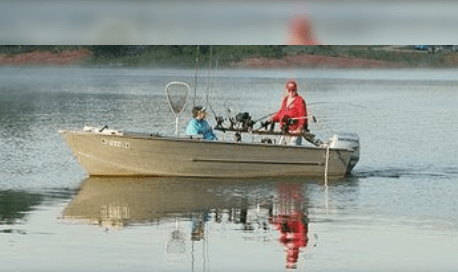
The fishermen instantly experienced a deep connection with the little cubs. Humans and bears had joined forces in a fruitful attempt to provide aid in the cubs’ most desperate moment. Naturally, the notion of adopting the bear cubs and making them pets may have crossed their minds. However, while the fishermen’s ultimate goal was to save these cubs, they understood that the ideal thing to do would be to safely reunite them with their mother. But the question was, how could they achieve this? They found themselves in the midst of a freezing lake, and they certainly didn’t wish to leave the cubs at risk once more.
What Do We Do Now?
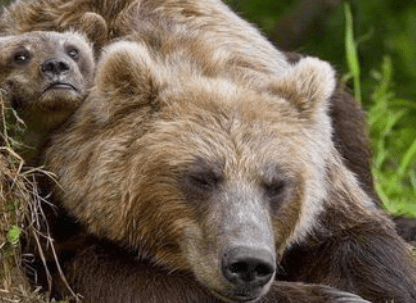
Having rescued the two bear cubs from the water, the fishermen were left with a crucial question – what to do with them now? The group of fishermen-cum-rescuers was aware their challenge didn’t end with the rescue; they had to locate the mother bear. Their last visual of her had been near the water’s edge, a location that could potentially lead to an attack if they ventured too close. The narrative now revolved around locating the mother and reuniting her with her offspring. They had glimpsed her taking shelter on solid grounds near the water, so they patrolled the coastline in their boat, seeking any sign of her. It proved to be a time-consuming endeavor, but they eventually pinpointed her last location and directed their vessel towards it.
More Danger To Come
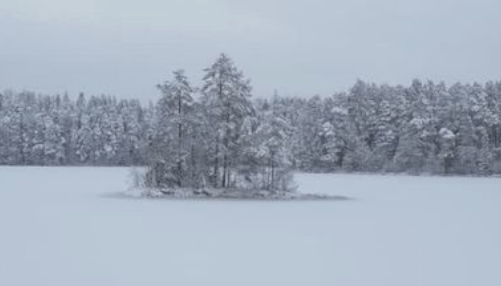
With a fair degree of confidence, the fishermen deduced they were in the right direction towards land. However, they were acutely aware that their subsequent move posed significant risk. Their destination was towards a wild creature, a mother to two helpless cubs who were currently with them. They were determined to reunite the cubs with their mother, despite recognizing the potential outcomes. It could rapidly escalate into a perilous situation or alternatively evolve into a tender, serene and affectionate reunion. They optimistically held onto the hope for the latter scenario yet, as they neared the last known location of the mother bear, they remained uncertain of what awaited them.
Brace Yourself
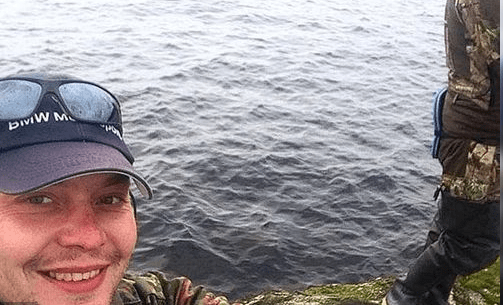
As they neared the potential reunion of the young bears with their mother, the fishermen prepared themselves for any possible unexpected situations they might face. When their boat reached the shore, they couldn’t help but wonder the whereabouts of the mother bear. They speculated that she might be nearby, observing them from a concealed spot to gauge if they posed any danger. It was clear to the fishermen that the next course of action involved getting the cubs off the boat. Their hope was for the bears to safely move ashore and trace the scent of their mother back to her. The men helped the feeble cubs onto solid ground.
Where Is Mama Bear?
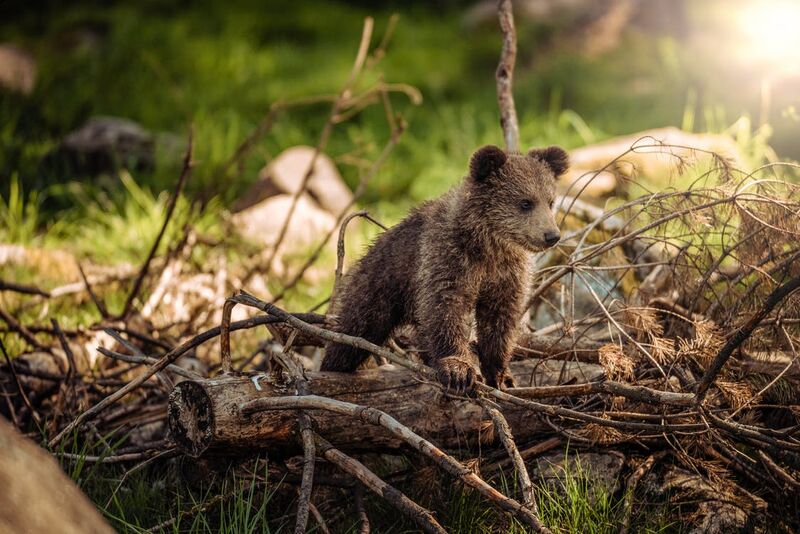
After successfully escorting the bear cubs from the vessel to the safety of the shore, the group geared themselves up for a potential assault by the mother bear. But there was no sign of the maternal figure. Could she have sincerely given up on these cubs? The group of fishermen were in a quandary, unsure of the possible outcomes or the correct course of action. It seemed as if the mother bear had lost all interest in meeting her misplaced offspring. Fears were growing that, left alone and subject to the severe cold, these vulnerable cubs wouldn’t survive without the care of their mother bear. The question loomed whether their demanding rescue work was, in fact, all for nothing.
Movement On The Other Bank
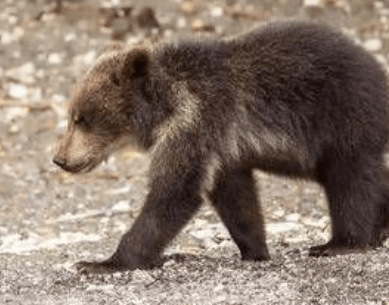
Observing the pair of young bear cubs as they traipsed off the boat onto dry ground, concern crept into their minds, fearing that these cubs were indeed abandoned by their mother. They were disheartened, feeling their attempts to save the cubs might have been futile. They didn’t want the cubs to fend for themselves but had no choice but to allow them to wander off, observe, and remain hopeful. Out of the blue, there was a stir at the opposite bank. It was the mother bear. She had located her offspring. They were safe, and she was eager to reunite with them, completing the family circle once more. She plunged into the water, swimming toward her twin cubs.
Mother Bear Swims Closer
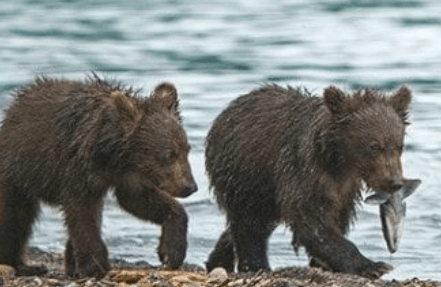
As the mother bear neared, her swimming pace increased significantly. The fishermen started to feel apprehensive, pondering why she hadn’t been able to swim with such agility and vigor when her cubs were riding on her back. Perhaps, the burden of the two cubs had thwarted her ability to maintain speed. Now that she was swimming alone, she appeared perfectly adept at traversing the lake promptly. Although the fishermen were elated about the mother bear coming to rescue her cubs, their fear also escalated, questioning their own security and speculating her potential actions as she continued to close in.
A Mother And Child Reunion At Last
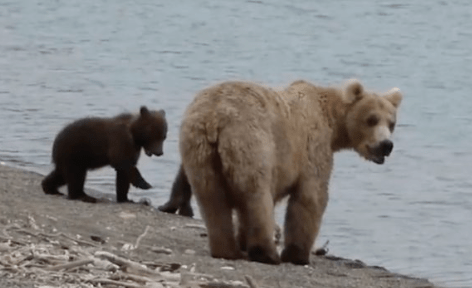
The fishermen observed the mother bear swimming quickly towards her cubs for a heartfelt reunion, and realized they could be in harm’s way as she approached. They opted to abandon the cubs and retreat to the boat. From the safety of their vessel, they were hopeful and knew they had exerted their best efforts to save her offspring. They got on the boat and only commenced the motor when the mother bear was nearly ashore. As they departed, they maintained a vigilant watch to see the outcome for the family of bears.
A Job Well Done

The fishermen observed pensively as they navigated to a safer distance, aware they had exerted their utmost efforts. They saw the mother bear making it to the shoreline and setting off towards her offspring. The farewell was sorrowful for the fishermen. In their speedy endeavor to rescue the bear cubs, they had become emotionally attached to the young creatures. There was a reluctance to depart, but they understood the necessity of their withdrawal to allow the mother bear to reunite safely with her cubs. They sensed a strong resolve in her this time, that she wouldn’t be leaving her cubs behind again.
Another Tale Of Man And Nature
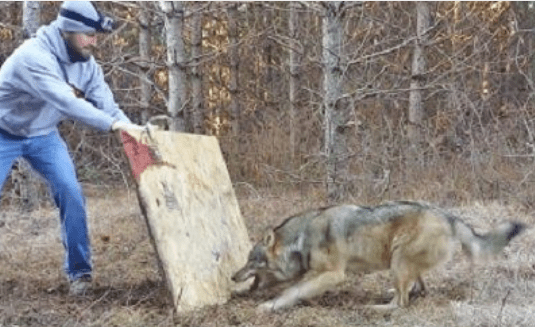
Adding to the ensemble of heroic tales showcasing mankind’s endeavors to assist nature, a new narrative emerges. This one brings a man and a wolf to center stage amid perilous situations in the woods. This incident unfolded on a man’s private property in Wisconsin, United States. He had laid a trap meant for coyotes, posing no threat to other creatures. However, he was unaware that his trap would soon endanger an unsuspecting forest dweller.
A Visitor Caught In A Trap
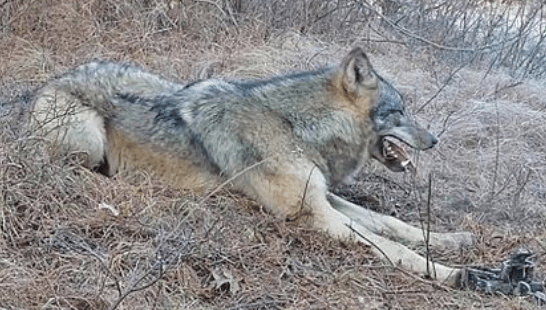
The man never anticipated catching anything other than a coyote in his snare. However, fate had different plans. Prior to a wayward coyote stumbling onto his property, a harmless bystander found the trap first. It happened to be a woodland wolf, which got painfully trapped instead. One can barely contemplate what must have subdued the man when he realized he had unintentionally ensnared a harmless timber wolf.
The Timber Wolf Fell Prey
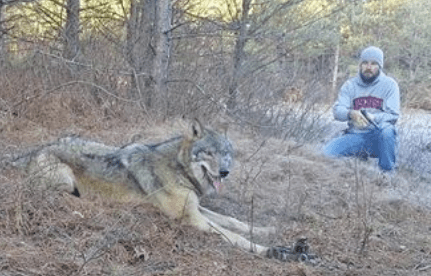
A man by the name of John Oens found that he had trapped a wolf instead of a coyote in a snare he had set up. He decided to chronicle all the subsequent events in a video that he posted on YouTube in 2015. The beginning of the video leaves some viewers puzzled about his original intent, as it sounds like he was planning to trap wolves since he says it’s his first timber wolf of the year. However, later in the video, he clarifies that his trap was actually intended for coyotes.
Traps and Wolves
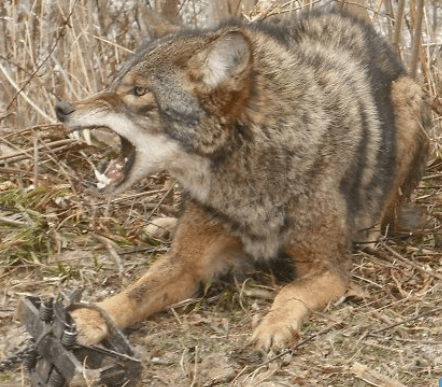
The snare that was prepared operates by fastening the animal’s paw, rendering it incapacitated and unable to escape. Even the most formidable creatures become defenseless once ensnared. The wolf in this scenario was not exempt. Coyotes can potentially endanger smaller animals like dogs or chickens present in the vicinity. However, timber wolves are not typically seen as a menace to human safety. Approximately 60,000 of them inhabit America. The majority of wolves harbor fear towards humans and actively evade any interaction. However, this particular wolf found itself not just in the direct line of sight of a human, but also reliant on the man’s help for its liberation.
How To Set The Wolf Free
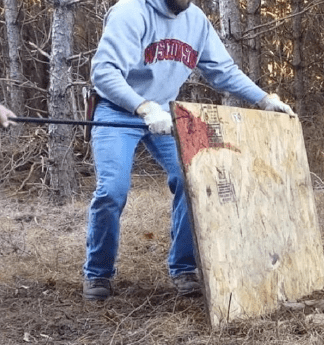
Accidentally ensnaring the wolf was not the most challenging aspect of the ordeal. The real difficulty lay in devising a way to liberate the wolf without sustaining any injury. Bound by the trap that had firmly gripped its paw, the wolf couldn’t make a move to free itself. Its menacing teeth were evident with just one glance. Hence, how could John liberate the captured animal without jeopardizing his own safety? He formed an ingenious plan that likely left those watching his recorded video pondering over how often he might have encountered such a situation before.
A Threatening Dilemma

John was now faced with the challenge of how to release the wolf without provoking aggression. An intriguing yet peculiar fact about wolves is their ability to reflect complete tranquility while feeling entirely different emotions inside. You could discern whether they are frightened or relaxed by paying attention to their respiration. Wolves, when contented, produce a twittering sound. Unlike tamed dogs who usually bark, they emit a more throaty puff that indicates fear or hostility.
Understanding Timber Wolves

In order to assist an animal effectively, it’s crucial to familiarize oneself with their basic attributes and mannerisms. Timber wolves, otherwise referred to as common wolves or gray wolves, are recognized as the largest species in their specific wolf lineage. In simple words, they are massive. This particular wolf lineage also consists of a number of domestic dogs, jackals, foxes, and other kinds of wolves. Originating from Eurasia, these wolves migrated to the United States thousands of years ago. Some adult individuals have been reported to exceed 5 feet in height.
Cold Temperatures Don’t Scare Them
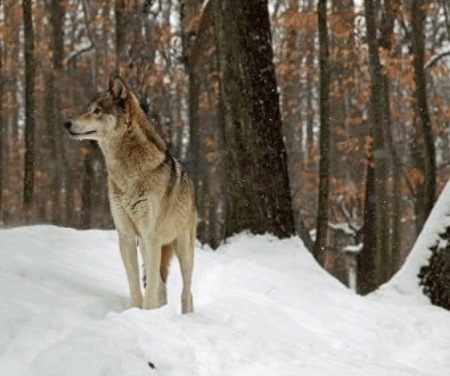
The timber wolf is perfectly adapted to live in the northern regions of Wisconsin during winter. Its thick coat protects it from harsh cold conditions. The wolf’s hair consists of dense fur. Similar to dogs, its fur can range in multiple colors. This fur has a fluffy base layer complimented by elongated guard hairs that provide protection against dampness. They are adequately insulated and shielded from icy winds and extremely cold winters reaching up to minus 20 degrees F. Even their paws are well-equipped to ward off frostbite with extra fur lodged between each toe.
Timber Wolf Paws Are Built For Winter
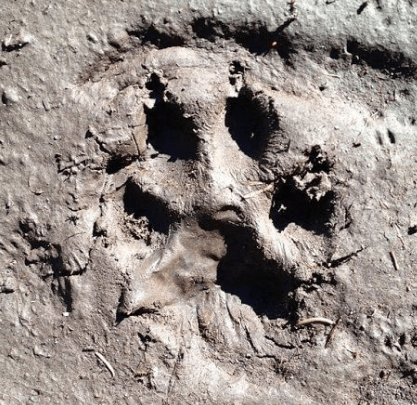
Their paws are specifically adapted to endure the extreme cold conditions found in the north. They even have fur between their toe pads for insulation against the harsh winter temperatures. These animals are famous for their significantly large paws. Moreover, their claws are incredibly sharp, posing a serious threat to John as he attempted to liberate this Timber Wolf from a trap. Their large and furry paws, equipped with sharp claws, enable them to run impressively fast, no matter if the environment is freezing cold or wet. These wolves can achieve speed traction of up to 45 miles per hour.
Additional Timber Wolf Traits
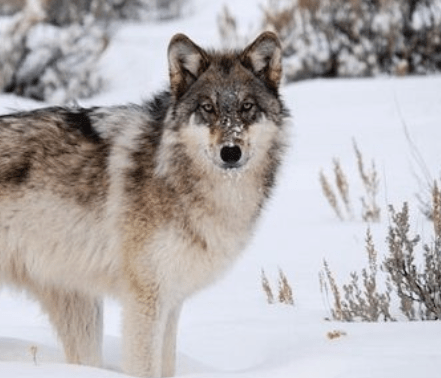
Male timber wolves are reported to be about 20 percent larger and heavier than their female counterparts. The speaker in the related video made an emphasis on the wolf’s size. Despite being called a gray wolf, the timber wolf’s coat can vary in color from white, brown, black, to gray, or even be a combination. This wolf features a double coat; long protective hairs on the outside and a layer of soft insulating fur underneath. Unlike the coyote that John was trying to trap, the wolf’s ears appear to be more rounded. Coyotes, on the other hand, have taller, pointed ears. Wolves boast a wider, shorter snout, compared to coyotes that have a narrower and more pointed nose – though, ideally, no one would want to get close enough to notice this distinction. The call of a wolf is long and drawn-out, as opposed to a coyote’s shorter, yapping noise.
Trapped Despite Its Survival Attributes
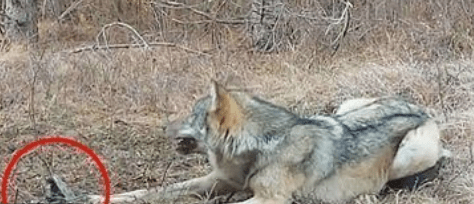
Despite possessing qualities that favored its survival in the harsh winters of the northern Midwest, this timber wolf found itself ensnared. The cold-resistant paw, its imposing size, and its ability to fend for itself in the wild weren’t enough to free it from this predicament. The wolf’s predicament remained: it was entrapped and could not break free itself. The only hope for release lay in the hands of John, the same human who had set the trap initially.
A Human Named John

John Oens was absent when the wolf got trapped. Yet, he was the very reason why the wolf ended up in that predicament. The situation was deeply distressing. Some might view the act of trapping an animal, regardless of its kind, as harsh or even cruel. John asserts that his aim was never to ensnare a timber wolf. However, he now found himself in a position where he had to make a decision. He believed the most compassionate action would be to free the wolf. But, how could he achieve this without endangering himself?
The Trap Was Intended For Safety
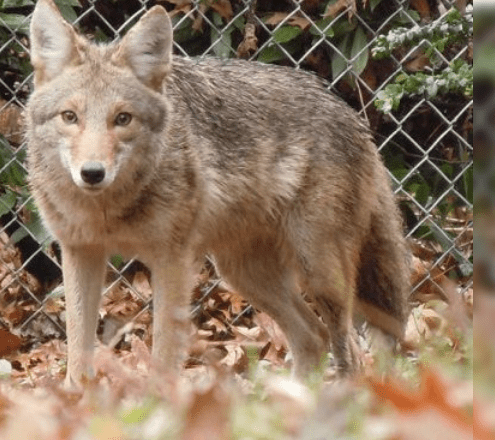
John asserted that his original motive for setting the trap was safety. His property had been plagued by visits from coyotes, and he sought to halt their advances. Coyotes will typically hunt solo or in twos, differing from dogs in myriad ways. One notable difference lies in their running behavior; a coyote runs with its tail lowered, contrasting with a dog that runs with its tail raised. Coyotes are renowned for their vocalizations and have minimal natural enemies. They are adept swimmers, capable of living up to two decades in captivity, and have an omnivorous diet that includes small dogs, chickens, and other petite creatures. They can also pose a danger to human toddlers.
A Plan To Set The Wolf Free
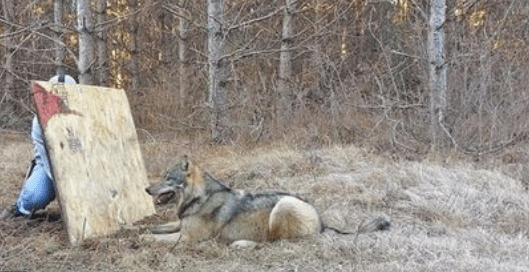
John’s original intention was to trap a coyote for the sake of safety, but what he ended up catching was a timber wolf. The ethical choice was to figure out a strategy to release the animal unharmed. The dilemma he faced was twofold. If the wolf became scared, it might unintentionally harm itself trying to escape. Alternatively, it could assault John. This was a novel scenario for John, having trapped a wolf in his trap for the first time. His primary concern was to rectify the situation. But, the question that haunted him was how to release the wolf without risking being attacked or potentially provoking the animal to hurt itself while trying to get out of the trap.
Once In A Lifetime Situation
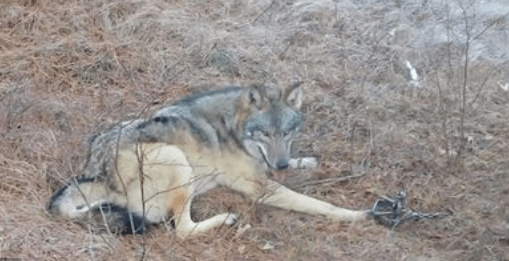
John never intended to ensnare a benign and harmless forest-dwelling wolf, so he realized that he was likely facing a unique situation. He understood that devising a method to liberate the creature safely was crucial, but also yearned to record the whole procedure. At the start of the recording, John’s voice can be heard explaining that the snare was originally intended for a coyote. He even provides details about the specific type of trap used, seemingly referring to it as a Number 3 Dogless Bridger Fully Modified Set for Coyote.
Uncertainty In The Video
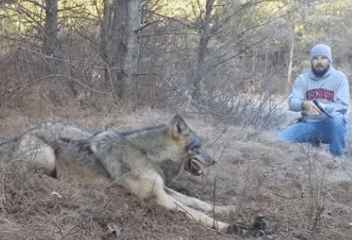
Seizing a video camera, he meticulously recorded every aspect of the situation. The recounting of this tale is possible due to his immediate decision to capture the unfolding events on tape. His astonishment at finding a wolf caught in his trap probably resulted in his slightly uncertain opening remark in the video, “This is my first timber wolf of 2015.” He immediately followed up by describing the creature as large and stunning, with an added commitment to figuring out a way to release it. His initial intention was never to ensnare the timber wolf, he was simply unsure about the process of releasing the animal.
Call For Help
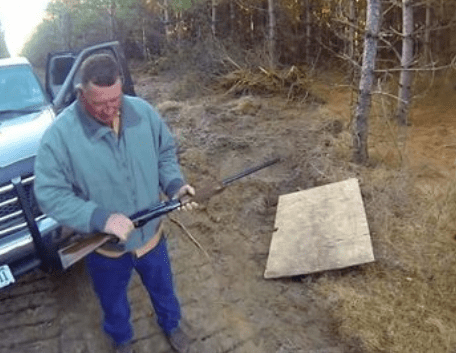
Prior to releasing the wolf, it seems he rang up another person for assistance. A voice can be heard in the video expressing doubt about the animal’s species, suggesting that it could be a very large coyote instead of a wolf. The doubts were somewhat sarcastic, nonetheless. Amidst it all, John held the belief that they actually had a timber wolf that required freedom. Therefore, the humans began plotting a strategy to safely guide the timber wolf away without causing harm to themselves or the animal.
The Human Seemed To Know Exactly What To Do
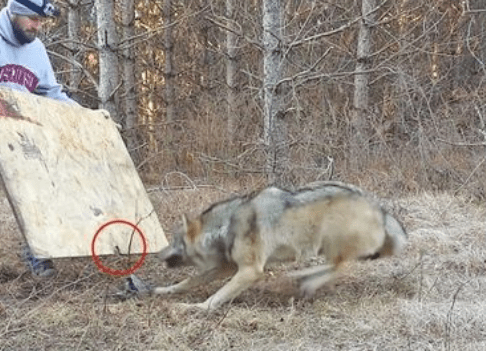
John doggedly pursued his plan to liberate the animal. It appeared he had a quick wit, considering this was his first encounter with a timber wolf ensnared in one of his coyote traps. He seemed fully aware of the necessary steps to take. He obtained a substantial piece of rectangular plywood, positioning it between himself and the wolf as a form of protection as he cautiously approached. He had astutely carved a groove in the bottom of the wooden rectangle, planning to place it over the wolf’s entrapped paw whilst keeping himself safeguarded.
Who Was More Scared?
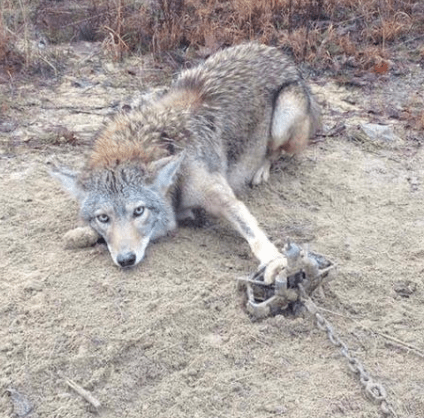
It’s likely that John and the wolf were just as terrified as each other in the circumstance. Although, John managed to maintain a calm and composed demeanor. His companions didn’t appear unduly worried either. However, it’s important to note, they had at least one gun with them and weren’t going to confront the wolf directly for the rescue. John leveraged a piece of plywood to establish a secure partition between him and the wolf. With careful movements, he approached the wolf, ensuring the animal stayed on one side of the barricade, while he strategically positioned the carved portion of the wood over the wolf’s trapped paw.
Protected Behind A Barrier
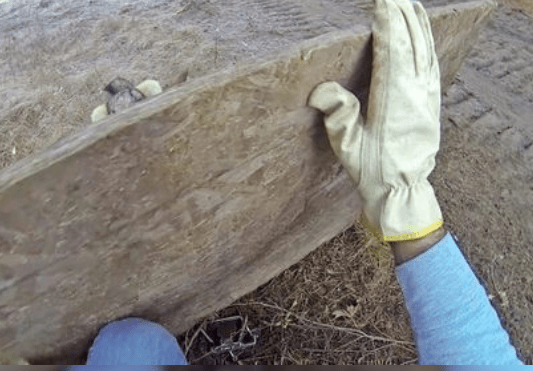
John Oens found himself engaged in a tug of war with a wolf, which was feverishly snapping its jaws at the plywood barrier he was hiding behind. Initially, the wolf had made aggressive attempts to damage the wooden protection, opening its mouth wide in an apparent bid to bite into it. However, it didn’t take much time for the wolf to calm down and cease its attacks. The plywood proved instrumental as a shield against any potential attacks. The entire ordeal was recorded using a GoPro camera mounted on Oens’ helmet, providing viewers with a firsthand look at his experience.
Releasing The Trap
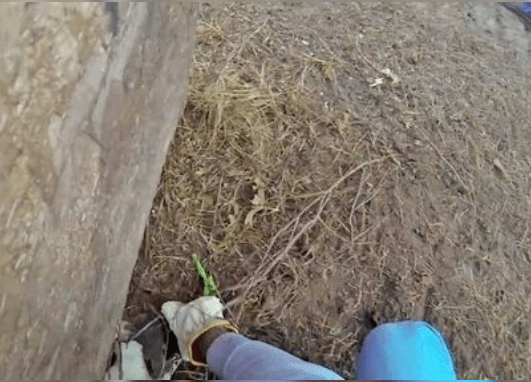
When the plywood, featuring a cut-out notch for the wolf’s paw, was ready, John prepared to unleash the trap. The process was quite simple and didn’t require much effort. While ensuring the plywood sheet was firm, John opened the trap, freeing the wolf’s captive paw. No tools were necessary, neither was there a certain trick to liberate the wolf. All John needed to do was unlatch the lever with his bare hands. The moment the lever was unhooked, the trap opened. His companions remained vigilant, their loaded rifles trained on the wolf, ready in case it attempted to attack Oens.
The Wolf Was Free
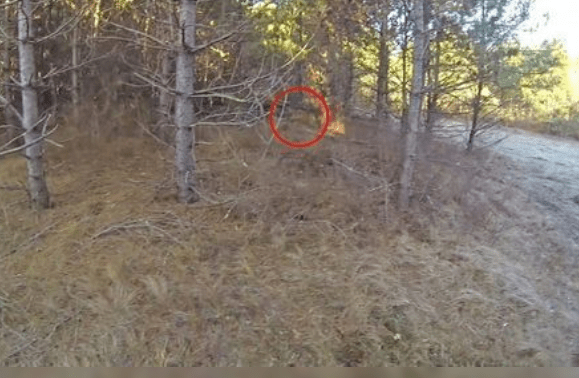
As soon as the snare was unlocked, the wolf dashed away. John’s companions stood prepared to safeguard him if needed, but they didn’t even have to prime their guns. The woodland wolf vanished swiftly into the trees as soon as its restraint was removed. The recorded footage shows the wolf sprinting unhampered, with seemingly no injury to its paw. It moved fluidly, showing no sign of limping. Any expectation of blood or visible injury was disproved as there were none evident. It returned to the wilderness, its quick and unaffected stride symbolizing liberation.
An Internet Sensation

As soon as John Oens shared his recorded adventure video online, he quickly gained popularity on the internet. His YouTube channel garnered over 3 million views for that particular video. Oens won people’s admiration for his swift thinking and ability to protect himself using merely a ply of wood. His wish to liberate the trapped wolf also resonated with his audience. Utilizing his intellect and creativity, he crafted a method to safely unfasten the trap, setting the wolf free to return to its life unhindered by the dread of hunting in the area.
An Endangered Species
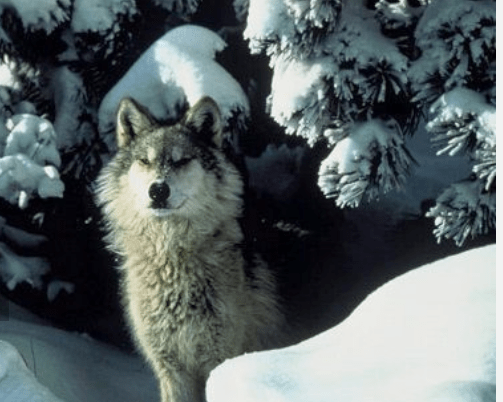
In the past, hunting and shooting wolves was legal, but in 2014, wolves were officially classified as an endangered species in Wisconsin. This new classification meant that hunting these animals was no longer legal and their population was safeguarded by the state law. During the time when wolves were not declared endangered at the state or federal level, Wisconsin had even enacted a wolf season. However, now, wolves are considered a federally endangered species across the United States, which disallows a wolf season. A federal judge backed the protection of these animals under the Endangered Species Act in December 2014, with Wisconsin being one of the states involved in this ruling.
It Took A Good Human Heart
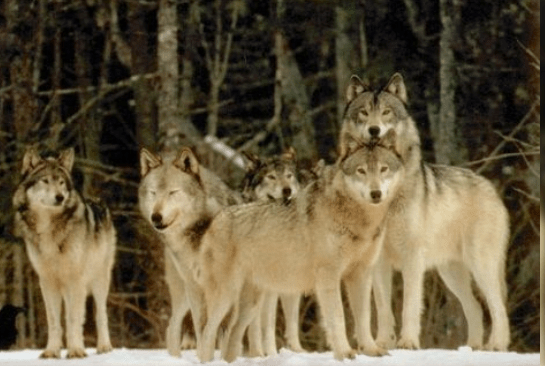
John strictly adhered to Wisconsin’s wildlife laws by liberating the animal, illustrating his profound moral integrity. Upon finding a trapped wolf within his terrain, he acted conscientiously, recognizing the creature’s helplessness. Instead of leaving it entrapped or resorting to fatal measures – a course some might boast about – John conscientiously elected an alternative approach. His unusual motivation was clearly demonstrated in his humane decision, resulting in the wolf’s eventual return to wilderness.
Misunderstood Fear Of Wolves
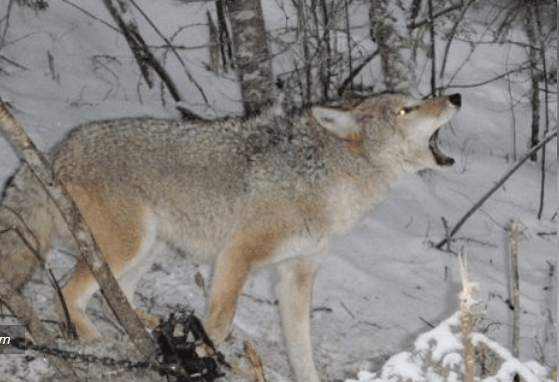
There are individuals who, due to misconceptions, fear wolves, consequently pushing for legal changes to permit hunting of these animals. After nearly six decades since the gray wolf was declared extinct in Wisconsin, the count remarkably surged to over 900, courtesy of the legal safety measures stipulated in the Federal Endangered Species Act, which prohibit hunting or causing harm to any enlisted species. Timber wolves, a subtype of the gray wolves, inhabit broad territories of the Northern Hemisphere, and at that point, they were among the endangered gray wolves.
Wolf Hunting
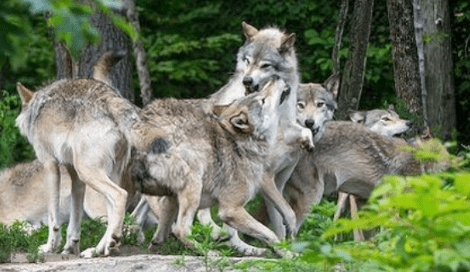
Backpedaling a few years prior to the incident of the wolf getting trapped on John Oens’ Wisconsin estate provides some context. In 2012, a couple of years before a law outlawing wolf hunting was enacted, it was entirely acceptable and lawful to hunt wolves in the state without restraint. This unrestricted hunting resulted in roughly 530 wolves losing their lives. These legal hunts significantly decreased the wolf population in the northern region, causing their numbers to dwindle to a point of endangerment. While it’s possible that John was aware of the newly enacted hunting prohibitions when he discovered the ensnared wolf on his land, it’s just as likely that he was merely acting out of compassion.
Keep The Wolf Population Thriving
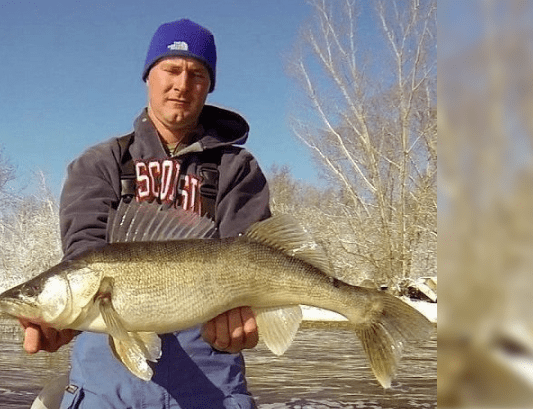
New legislation has been introduced in Wisconsin pertaining to wolf hunting and fishing activities. From that point onwards, the state has witnessed a surge in its wolf population. It’s estimated that nearly 1,000 wolves now inhabit this northern midwestern area of the United States. This is an encouraging development for the species! John Oens, through his bravery and sharp decision-making skills, played a significant role in the resurgence of the dwindling wolf populace. John’s contribution extended beyond freeing just one wolf; he aided in the restoration of the entire wolf species within the state. This act of kindness and goodwill is laudable.
It Pays To Be Kind
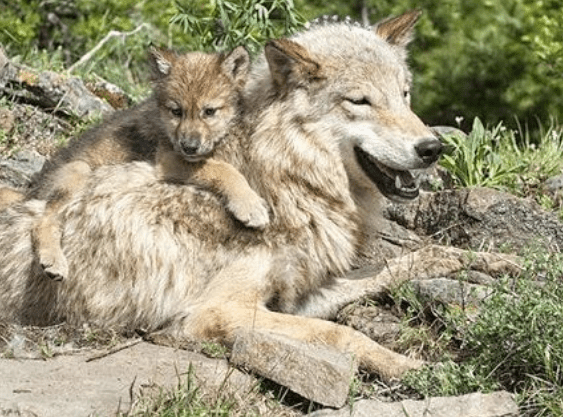
This tale might have concluded in a much more despairing manner. The wolf at any moment could have escalated to aggression and targeted John. Similarly, John and his friends, armed with guns, had the capability to preemptively end the scene by shooting the creature. John’s companions were goading him somewhat, and while it appeared to be light-hearted, they might have been inclined to handle the scenario more fatally. The outcome was uncertain. However, John opted for empathy and kindness instead. Such a story provides a beacon of hope for all of humanity.
Wolf Set Free
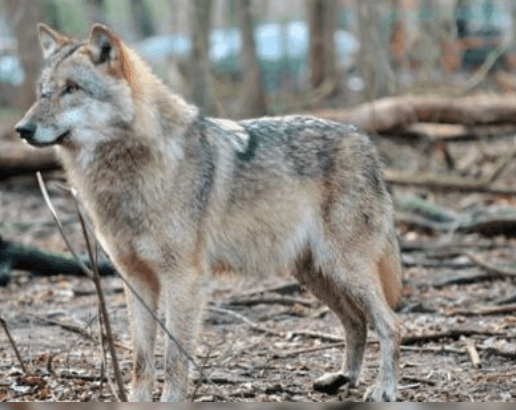
Ultimately, this tale of the timber wolf had a joyful conclusion. The wolf was successfully liberated to dart off safely. The intersection of human resourcefulness and an animal’s cry for aid turned out beneficial for both. In this scenario, a person’s swift, ingenious action showcased empathy and kindness in the midst of peril. Humans and nature had a direct encounter, and despite the potential for a terrible fate for either party involved, each story culminated in a positive outcome, boosting hopefulness for the animal’s future. Stories like these inspire happiness and a sense of fulfillment in our humanity and humaneness.

